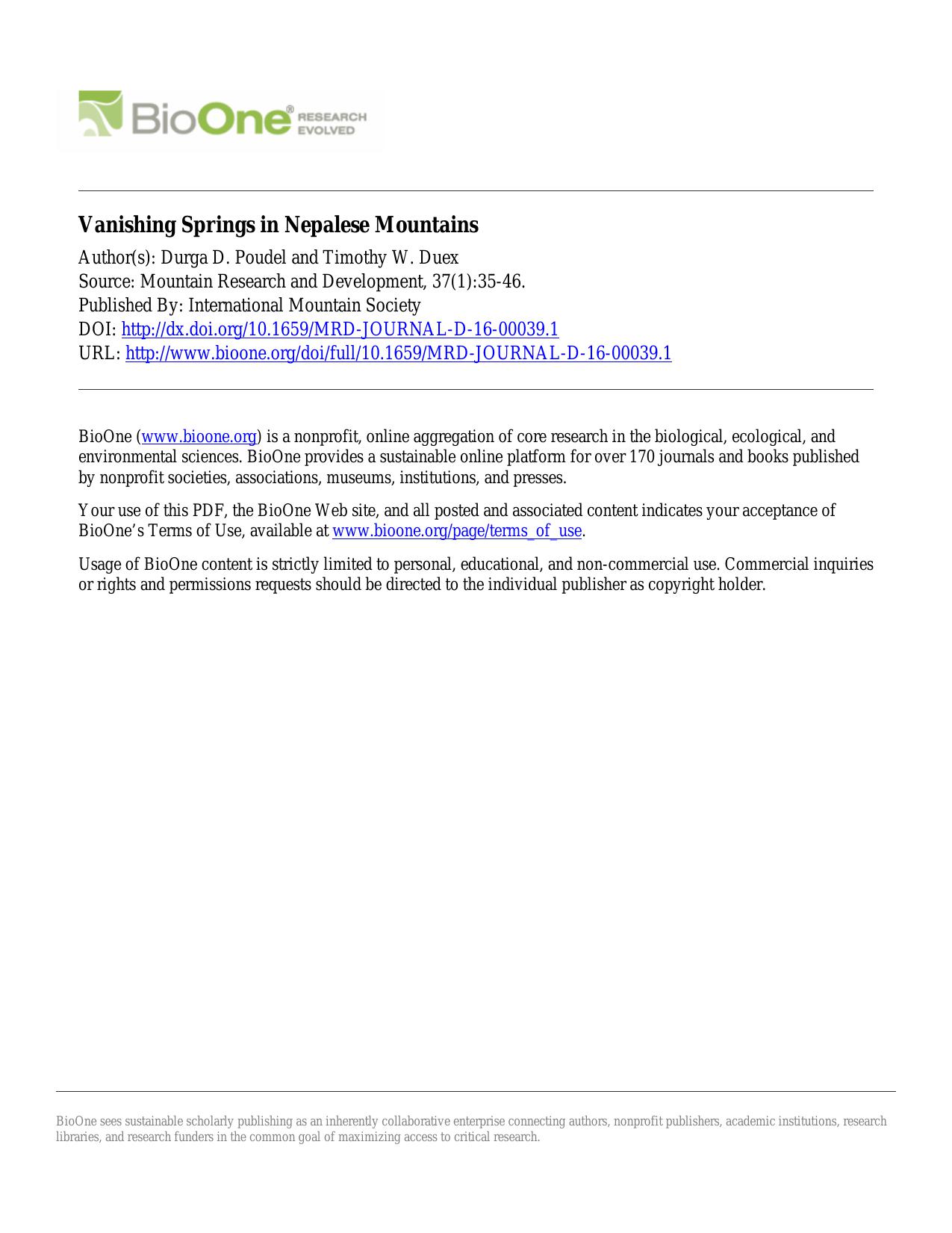
The Thulokhola watershed of the Nuwakot district in the midhills region of Nepal can be considered typical of climate change-related stresses in the region. To assess the status of water resources and document farmers' perceptions of and adaptation to climate change impacts in this watershed, we invited community groups to monitor water quality and conducted 6 focus group meetings, 3 participatory rural appraisals, and spring and household surveys in 2011 and 2012. Historical precipitation data from a nearby weather station and discharge data for the Tadi Khola, the nearest major river, were also analyzed. The spring survey results confirmed farmers' perceptions and showed that 73.2% of the springs used as water sources had a decreased flow and 12.2% had dried up over the past 10 or more years, as recognized by local residents. In response to the severe decline of precipitation and the drying up of springs, local communities have implemented some climate change adaptation measures, such as constructing water tanks at water sources, using pipes to transport drinking water, diverting water from other springs, digging deeper wells, and traveling farther to wash clothes and fetch drinking water. To enhance drinking water supplies and ensure the agricultural, ecological, and environmental integrity of the watershed, initiatives such as comprehensive research on springs and groundwater hydrology, a spring rejuvenation program, and community capacity building for water sustainability and climate change adaptation are suggested.